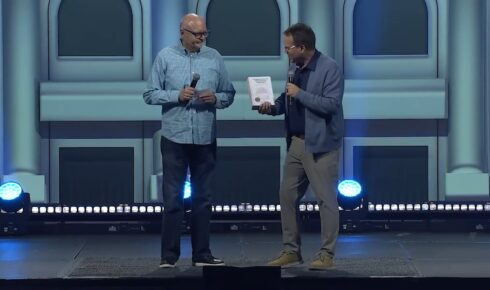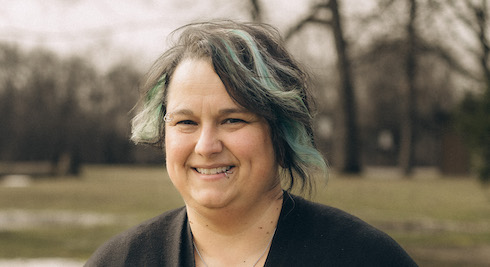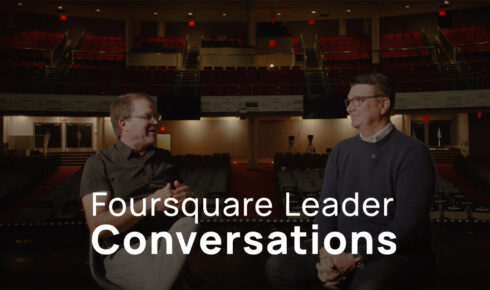Across the nation, in virtually every corner of the country, neighborhoods are changing. They are no longer as “local” as they used to be—in fact, “global neighborhoods” is the new term being used to tag this growing social diversity, which since 1980 has increased dramatically, according to John R. Logan, professor of sociology at Brown University and director of the social research group US2010 Project.
“In America’s most multiethnic metropolitan regions,” Logan says, “about half of residents now live in global neighborhoods—community areas where whites, blacks, Hispanics and Asians are all represented in substantial numbers—more than twice as many as in 1980.”
Just this year, a landmark change in America’s population was announced when the U.S. Census Bureau reported in May, for the first time in its history of tracking demographics, that racial and ethnic minorities make up more than half the children being born in the country.
There’s no question that the “face” of America is changing fast. The real question is, what are we doing about it?
Many Foursquare churches recognize that although it’s more convenient to associate with those who look like us, work like us, laugh like us and shop like us, this smothering sameness ultimately will suffocate the heart of the message of Jesus—who “purchased for God persons from every tribe and language and people and nation” (Rev. 5:9, NIV).
Whether sharing buildings with congregations that speak different languages or building bridges with community leaders, Foursquare churches are devoting time to their changing neighborhoods and finding new ways to introduce the “newcomers” to Jesus.
The Future of America
At the L.A. International Christian Center (North Hollywood Foursquare Church) in North Hollywood, Calif., Senior Pastor Alex Prokopchik is dedicated to what he calls the “future of America”: the multiethnic church.
Five churches representing five nationalities share space at the center. Brazilian, Japanese, Armenian, Russian and nonethnic American congregations separately hold meetings, worship and fellowship, and reach their communities while sharing the common functions and amenities of one building.
Each congregation has a pastor, and on Sundays every church holds a service.
“We begin Sunday at 10 a.m. and end at 9 p.m.” says Alex, who pastors the Russian and nonethnic American congregations. “It’s a long day!”
This five-in-one structure means that tasks most churches probably consider routine must be carefully organized and administrated. Much time is devoted to making sure conflicts in scheduling are avoided, the use of sound equipment is coordinated, kitchen facilities and supplies are stocked and ready when needed, and meeting rooms are furnished and decorated for each church’s style of service.
Also, because the ethnic composition of the five congregations differs so widely, cultural pride sometimes creeps in, threatening the unity of all. The leaders must devote time to staying “in one accord,” Alex says.
“It’s the only way,” he adds. “Each congregation has its own character. So boundaries are required, and all of us have to follow [these] guidelines.”
All the pastors meet every three months for prayer, worship and fellowship.
“Prayer, in particular, is vital to becoming one,” Alex affirms. “As the leaders, we must do something godly together.”
All the congregations gather together as well, once a month for two consecutive nights, for teaching services that are part of the center’s school of ministry.
For Alex, such challenges are important but minor compared with the reward of seeing these blended believers empowered to pursue their callings. For the Russian national, who has lived in the U.S. for 20 years, L.A. International Christian Center is a microcosm of the American church to come—”the future of America,” he observes. Yet he notes ironically: “Most American churches are not open to immigrants.”
Many immigrant churches are learning the hard way that American churches can be less than warm to foreigners. This is especially true, according to Alex, in the cases of Christians from other countries who seek to rent meeting space from American churches. They commonly are expected to pay a la carte—being charged for each expense the host church might incur from them, right down to rolls of toilet paper.
“Immigrants tend to think that U.S. churches are all about business, all about making money,” he states.
Alex offers simple advice to leaders seeking to reach their changing neighborhoods: “If you are trying to reach the immigrants in your community, don’t ask them to contribute money, and don’t start with asking them to join you. Start with serving them. Work with them. Eat together. Help them, and be their friends and neighbors.”
Taking Time for Relationships
At New Life Center (Harbor City Foursquare Church) church in Harbor City, Calif., Pastor Ken Bringas is discovering that consistent time dedicated to building friendships within the community is opening doors for the gospel.
In the ethnically and socioeconomically diverse community of Harbor City, Ken pastors a church that is about 70 percent Filipino-American, and includes Nigerians, Hispanics, Koreans, African-Americans and whites, many of whom are in multiracial marriages.
While Ken’s broader ministry vision is to “make disciples” and multiply, he recognizes his 250-member Harbor City church is becoming a bridge for the gospel, primarily because of the time it has devoted to building relationships.
Reaching out to residents of a neighborhood housing project has led to “good working relationships with the organization that leads the project,” he says. As a result, the church is allowed to conduct a “backpack outreach” to the children who live there, providing them with backpacks and school supplies, and offer a Christmas gift-giving outreach. Currently, New Life Center is seeking permission to operate an after-school program for kids in the project.
Being a community changer, Ken says, means “listening to the Holy Spirit” first, “and to the people and the community.”
“My heart is disciple-making, to multiply devoted followers of Jesus,” Ken explains. “But I would like our neighborhood to say, ‘This is our church.’ I want to create a bond with the community, for our church to be a bridge, a safe place for people in our community to go.
“[Ministry] programs come and go,” he stresses, “but relationships are most important.”
Cultural change is coming fast to our communities. If we don’t change with them, we could risk this new generation being lost in the multiethnic translation. That’s a risk some Foursquare churches are not willing to take.
This is Part 2 of 2
Discover 12 Ways to Get Out of Your Church and Into Your Community


